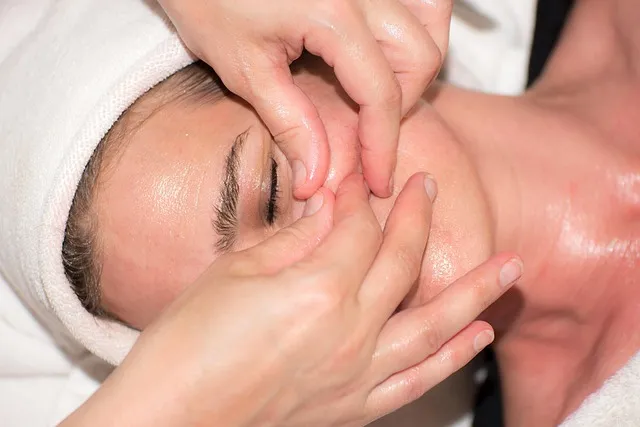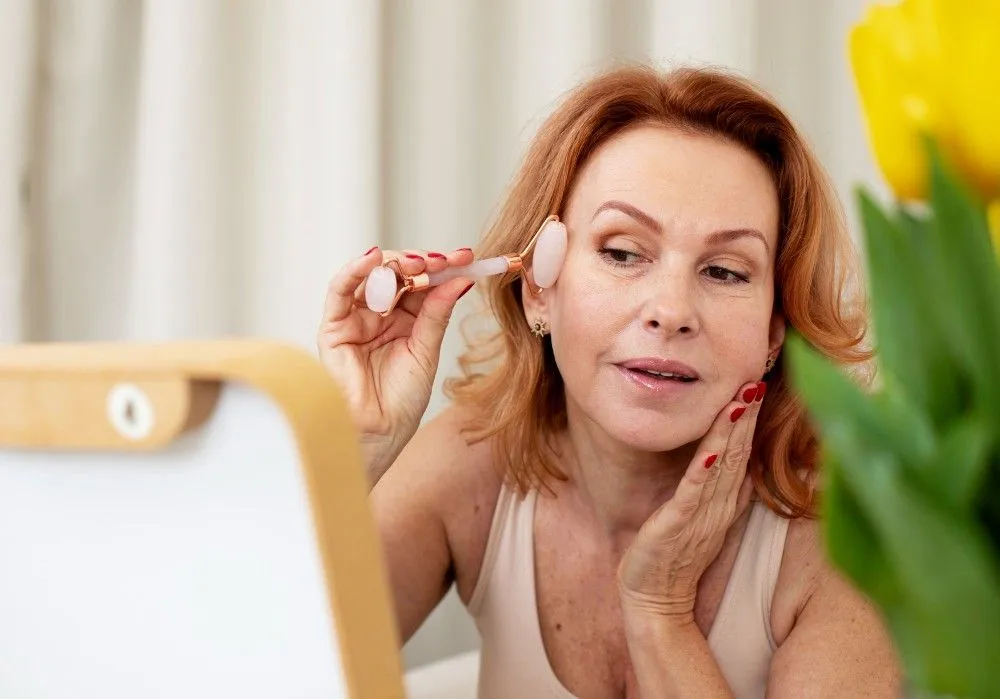Scars come in a variety of colors, sizes, and textures. Many scars fade over time, becoming smaller, smoother, and less noticeable. However, for about 10% of the population, even minor injuries can result in scars that are extremely large, raised, and dark in color.
They enlarge far beyond the original skin injury that occurred, and they may keep growing with time. Keloids are the medical term for these types of scars.
In this article, we will see how to get rid of keloids through medical treatments and home remedies.
 When the skin is injured, a fibrous tissue known as scar tissue forms over the wound to rebuild and protect it. In certain cases, additional scar tissue forms, producing smooth, hard growths known as keloids.
A keloid can be caused by anything that could cause a scar. It includes having been burned, cut, or suffering from severe acne. Keloids can grow to be significantly bigger than the initial wound. Keloids, on the other hand, can impact any part of the body. Body piercing, tattoo, or surgery may lead to Keloids. Keloids can appear 3 months or over after the skin has been injured. Some keloids grow for years.
Keloids are not harmful to health, but they can cause cosmetic issues.
Also, Read How to Get Rid of Stretch Marks on Thighs?
When the skin is injured, a fibrous tissue known as scar tissue forms over the wound to rebuild and protect it. In certain cases, additional scar tissue forms, producing smooth, hard growths known as keloids.
A keloid can be caused by anything that could cause a scar. It includes having been burned, cut, or suffering from severe acne. Keloids can grow to be significantly bigger than the initial wound. Keloids, on the other hand, can impact any part of the body. Body piercing, tattoo, or surgery may lead to Keloids. Keloids can appear 3 months or over after the skin has been injured. Some keloids grow for years.
Keloids are not harmful to health, but they can cause cosmetic issues.
Also, Read How to Get Rid of Stretch Marks on Thighs?
What are keloids?
 When the skin is injured, a fibrous tissue known as scar tissue forms over the wound to rebuild and protect it. In certain cases, additional scar tissue forms, producing smooth, hard growths known as keloids.
A keloid can be caused by anything that could cause a scar. It includes having been burned, cut, or suffering from severe acne. Keloids can grow to be significantly bigger than the initial wound. Keloids, on the other hand, can impact any part of the body. Body piercing, tattoo, or surgery may lead to Keloids. Keloids can appear 3 months or over after the skin has been injured. Some keloids grow for years.
Keloids are not harmful to health, but they can cause cosmetic issues.
Also, Read How to Get Rid of Stretch Marks on Thighs?
When the skin is injured, a fibrous tissue known as scar tissue forms over the wound to rebuild and protect it. In certain cases, additional scar tissue forms, producing smooth, hard growths known as keloids.
A keloid can be caused by anything that could cause a scar. It includes having been burned, cut, or suffering from severe acne. Keloids can grow to be significantly bigger than the initial wound. Keloids, on the other hand, can impact any part of the body. Body piercing, tattoo, or surgery may lead to Keloids. Keloids can appear 3 months or over after the skin has been injured. Some keloids grow for years.
Keloids are not harmful to health, but they can cause cosmetic issues.
Also, Read How to Get Rid of Stretch Marks on Thighs?
How to get rid of keloid with medical treatments?
No home remedies are proven to remove keloids once they've been formed. However, there are a couple of things that individuals can perform at home after a skin injury to assist in avoiding or mitigating the appearance of keloids. Continue to read about how to get rid of keloids:1. Silicone sheeting or gel -
Silicone is a popular scar treatment that has been shown to aid in shrinking several raised and keloid scars. Silicone has a low risk of side effects and is simple to apply. Aesthetic Plastic Surgery and the Journal of Cutaneous and Aesthetic Surgery both published reviews confirming that silicone sheeting or gel, as directed, can efficiently shrink existing raised scars or prevent new ones from forming.2. Lotion or heavy skin cream -
According to a study published in the International Journal of Cosmetic Science, some skin products, including those containing lanolin or petrolatum, may assist in enhancing the appearance of scars. Individuals must apply creams regularly and contain the scar as the wound heals. And even though creams containing onion extract or Vitamin E are commonly used to treat scars, a review published in American Family Physician and a study published in Dermatologic Surgery discovered that all these ingredients do not appear to assist with keloids.3. Retinoid cream -
Retinoid cream is a vitamin A or retinol derivative. A 2010 study review notes that the cream, including natural remedies such as garlic or onion, has been medically mentioned to minimize keloid appearance.4. Steroid injections -
This treatment has been utilized successfully on keloids for many years. According to a study published in the Journal of Medical Investigations and Practice, injected steroids efficiently reduce the size and appearance of keloids. According to a review published in American Family Physician, steroid treatments work best on treating the new keloids and when merged with surgery for removing a portion of the scar. It may be utilized alongside cryotherapy.5. Cryotherapy -
Cryotherapy is a method of temporarily freezing tissues with a hand-held device. Most people will tolerate the treatment, but some may experience extreme pain during the process that fades away after that. According to a study published in the Journal of Cutaneous and Aesthetic Surgery, cryotherapy can decrease the size of keloid scarring by up to 50% after several treatments. However, according to the study, cryotherapy works much better on smaller keloids under 3 years old.6. Imiquimod cream -
This cream treats skin conditions such as superficial basal cell skin cancer. It works on the skin after a keloid has been removed. A review released in the Journal of Maxillofacial and Oral Surgery found that the imiquimod cream reduced the chance of keloid reoccurring.7. Laser treatment -
Laser therapy is an effective option for permanent keloid removal. Laser treatment uses high-powered light beams to resurface the keloid and surrounding skin, resulting in a smoother, more toned appearance. Moreover, there's also a high chance that laser treatment will worsen the keloids by increasing scarring and redness. While all these negative effects can sometimes be better than the original scar, you should still expect some scarring.8. Surgery for keloid-
Keloid removal surgery is a commonly used method to remove large or persistent keloids, but it can also increase the risk of new keloid formation. Surgical removal is one option for permanent keloid removal and may require additional treatment to prevent a recurrence. Read Also: PCOS: What it does to a woman's bodyWhat are some home remedies to get rid of the keloids?
There are several options for getting rid of or minimizing keloids. If a dermatologist has approved you for prescribed medication or over-the-counter (OTC) approaches, you can first try some of these natural remedies.1. Aspirin
According to a 2020 and a 2015 study, aspirin could effectively treat keloids. According to the findings, aspirin inhibits scar-promoting cells from attempting to enter the scar tissue site. Both hyperpigmented and keloid sizes are decreased as a result. At home, aspirin can be a topical treatment.2. Lemon juice
Vitamin C may aid in wound healing and the prevention of keloid scars. Lemon is high in vitamin C, which might help to reduce keloids to some extent. Anecdotal evidence suggests that you will see those changes in your skin by applying lemon juice regularly.3. Garlic.
Based on a 2011 dermatology study, garlic works similarly to aspirin in preventing specific enzymes from entering the site, contributing to tissue and pigment buildup. The application could lighten scar tissue over time.4. Honey.
Honey contains anti-inflammatory substances that could aid in the reduction of keloids. A 2020 research study specifically mentioned honey's healing potential with keloids. It's a natural alternative that doesn't have the possible negative effects of cortisone or non-steroidal anti-inflammatory drugs (NSAIDs) like aspirin.5. Onion
Several studies back up the possibility of employing onion for keloids. According to a 2013 study, using onion extract prevented fibroblasts (the cells that generate scar tissue from entering the skin). Another study published in 2012 discovered that onion extract juice accelerated repair and reduced scar height. An onion extract juice was found to reduce pigmentation in a 2011 study. The gel's efficacy is still most likely due to quercetin, a flavanol with beneficial antioxidant properties. Also, Read How to Get Rid of the Crackling Sound in My Ears?Conclusion -
Keloids are caused by an extreme version of the body's natural scar tissue processes. Natural remedies can significantly decrease the size and pigmentation of keloids, making them less visible. Home remedies are particularly effective immediately following a wound, puncture, or burn. If the keloids do not improve with home remedies, consult a doctor about all other options. They may suggest over-the-counter or prescription creams and gels. If other treatment methods fail, surgical and laser removal are good alternatives. Remember that no matter what procedure is used to treat keloids, they can return.in
Tagged in
Scars

Reviewed by







